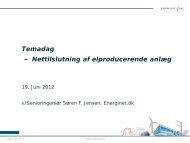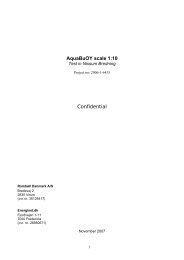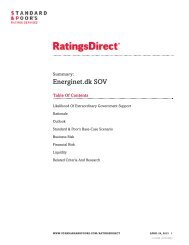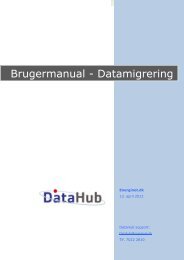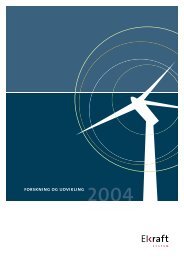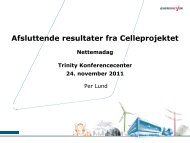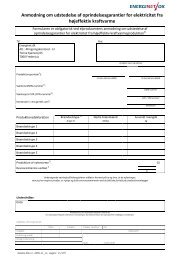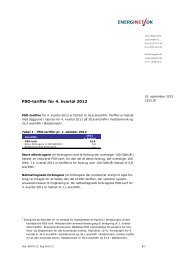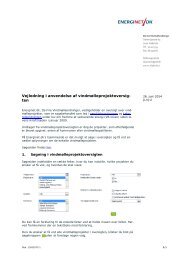smart griD IN DENmARK 2.0 - Energinet.dk
smart griD IN DENmARK 2.0 - Energinet.dk
smart griD IN DENmARK 2.0 - Energinet.dk
- No tags were found...
You also want an ePaper? Increase the reach of your titles
YUMPU automatically turns print PDFs into web optimized ePapers that Google loves.
16 | <strong>smart</strong> grid <strong>IN</strong> DENMARK <strong>2.0</strong>GRID COMPANIES AND ENERG<strong>IN</strong>ET.DK HAVE DIFFER<strong>IN</strong>G NEEDS¼ <strong>Energinet</strong>.<strong>dk</strong> needs flexibility services in order to meet its obligation to guarantee system balance. Thegrid companies’ demand for flexibility primarily springs from their need to counter situations of localoverload in the distribution grid. <strong>Energinet</strong>.<strong>dk</strong> therefore demands relatively large volumes of power, butcan, on the other hand, use resources from all over northern Europe, except in cases of congestion inthe transmission grid. By contrast, a grid company will usually demand significantly less power which,however, must be very precisely localised in relation to the overloaded grid area – perhaps down to thelevel of an individual district or street, or concentrated on a single major consumption or productionunit.Flexibility products targeted at grid companies are,initially, expected to be traded via bilateral agreements,then via a simple market place for flexibilityproducts (display window) and finally via a formalmarket for trading in standardised flexibility products.This will introduce new ways for the grid companiesto procure flexibility products as an alternativeto grid reinforcements.It is important that trading in flexibility to overcomesituations of local overload in the distribution grid iscoupled with existing markets for flexibility for bal-an cing purposes, especially the joint Nordic regula t-ing power market (NOIS). This ensures synergies sothat flexible services which are available to the gridcompanies are also available to <strong>Energinet</strong>.<strong>dk</strong>, sothat activating resources on the part of <strong>Energinet</strong>.<strong>dk</strong>takes account of the operational status of the distributiongrid, and so that a given resource only hasto be offered in a single place. This means that resourcescan be activated for different purposes in thepower system for the benefit of both private earningsand the economy at large.ESTABLISH<strong>IN</strong>G A NEW MARKET FOR FLEXIBILITY¼ PHASE 1 – BILATERAL AGREEMENTSThe flexible customers are not yet mobilised and are not aware of the possibility for and value of supplyingflexibility. Thus, there will only be a few customers offering flexibility to begin with, and the agreementswill be individually tailored rather than being standard contracts.¼ PHASE 2 – MARKET PLACEIn phase 2, a simple market place is established where the grid companies will, from the outset, be ableto announce their flexibility needs, knowing that there are flexible customers who will respond out of adesire to supply flexibility.In the traditional electricity markets, the players submit purchase and sales bids to a central body, forexample the joint Nordic power market (NordPool), which then matches supply and demand and calculatesa marginal settlement price. The market place for flexibility, on the other hand, is conceived as aplace where sellers and buyers can find each other and agree deliveries of various flexibility productswithout the need for a central coordinating function – i.e. a broader interpretation of the word “marketplace”.The market place for flexibility services will increase transparency, but it will still be necessary to enterinto individual agreements that specify the service.¼ PHASE 3 – MARKETIn phase 3, a formal market for well-defined and uniform flexibility services is established. This canonly happen once the use of the simple market place has led to the consolidation of well-defined productsand a certain market volume.



